Do you have a question about the MSI G41M-P28 and is the answer not in the manual?
States that modifications not approved by the party responsible for compliance void user authority to operate.
Recommends using shielded interface cables and AC power cord for emission compliance.
General advice on reading instructions, keeping equipment safe, proper placement, and power connection.
Lists situations requiring equipment check by service personnel, e.g., damaged cord or liquid penetration.
Warns about the danger of explosion if the battery is replaced incorrectly.
Illustrates and labels the main components and connectors on the mainboard.
Details supported processors, CPU fan header, and Front Side Bus speeds.
Specifies the North and South bridge chipsets and memory slot types/capacities.
Lists specifications for networking, audio codec, IDE, SATA ports, and floppy drive support.
Details onboard connectors, expansion slots like PCIe and PCI, and form factor.
Describes mounting holes and where to find accessories and part numbers.
Guides on installing standoffs and screwing the mainboard into the chassis correctly.
Warns against short circuits from metal components on the mainboard or chassis.
Identifies common rear panel connectors like USB, LAN, VGA, PS/2, and audio.
Provides steps and considerations for installing the CPU and its cooler for LGA775 socket.
Detailed step-by-step instructions and important reminders for CPU and heatsink installation.
Explains how to correctly insert memory modules into DIMM slots, ensuring proper orientation and seating.
Provides essential guidelines for dual-channel mode and the correct DIMM slot order for boot-up.
Details the 24-pin and 4-pin ATX power connectors for mainboard and CPU power.
Describes the FDD1 connector and its supported floppy disk drive types.
Explains the IDE1 connector for drives and Serial ATA connectors for storage devices.
Details fan power connectors, pin assignments, and the use of speed-sensing fans for CPU control.
Describes S/PDIF-Out and CD-In connectors for audio transmission and input.
Explains JFP1/JFP2 for connecting front panel switches, LEDs, power, and reset.
Details the JCOM1 connector for high-speed serial communication ports.
Explains the JAUD1 connector for front panel audio connections.
Describes JUSB1/JUSB2 for connecting high-speed USB peripherals like cameras and drives.
Details the JTPM1 connector for attaching a Trusted Platform Module (TPM) for security.
Explains the JCI1 connector for chassis intrusion detection and how to clear warnings.
Describes the JBAT1 jumper for clearing CMOS settings and important precautions.
Details the PCIe 2.0 x16 slot and PCI slots for expansion cards.
Explains the IRQ routing for PCI slots, mapping interrupt lines to bus pins.
Instructs how to enter the BIOS setup utility by pressing the DEL key during POST.
Describes the main screen of the BIOS setup utility and navigation keys.
Lists the main categories within the BIOS setup for system configuration, peripherals, power, and monitoring.
Explains the Cell Menu for frequency/voltage control and M-Flash for BIOS updates.
Describes loading default BIOS settings and options for saving or discarding changes.
Details how to view current CPU/DRAM frequencies, CPU specifications, and supported technologies.
Explains Intel EIST, adjusting CPU FSB frequency, ratio, and resulting frequency.
Describes accessing memory information and configuring advanced DRAM timings.
Details various DRAM timing parameters like CL, tRCD, tRP, tRAS, tRTP, tRFC, tWR, tRRD, tWTR.
Covers FSB/DRAM ratio adjustment, PCI-E frequency, and Spread Spectrum for EMI reduction.
Discusses the use and implications of Spread Spectrum for EMI reduction and system stability.
Explains how to load default BIOS settings for stable performance and the process involved.
States that modifications not approved by the party responsible for compliance void user authority to operate.
Recommends using shielded interface cables and AC power cord for emission compliance.
General advice on reading instructions, keeping equipment safe, proper placement, and power connection.
Lists situations requiring equipment check by service personnel, e.g., damaged cord or liquid penetration.
Warns about the danger of explosion if the battery is replaced incorrectly.
Illustrates and labels the main components and connectors on the mainboard.
Details supported processors, CPU fan header, and Front Side Bus speeds.
Specifies the North and South bridge chipsets and memory slot types/capacities.
Lists specifications for networking, audio codec, IDE, SATA ports, and floppy drive support.
Details onboard connectors, expansion slots like PCIe and PCI, and form factor.
Describes mounting holes and where to find accessories and part numbers.
Guides on installing standoffs and screwing the mainboard into the chassis correctly.
Warns against short circuits from metal components on the mainboard or chassis.
Identifies common rear panel connectors like USB, LAN, VGA, PS/2, and audio.
Provides steps and considerations for installing the CPU and its cooler for LGA775 socket.
Detailed step-by-step instructions and important reminders for CPU and heatsink installation.
Explains how to correctly insert memory modules into DIMM slots, ensuring proper orientation and seating.
Provides essential guidelines for dual-channel mode and the correct DIMM slot order for boot-up.
Details the 24-pin and 4-pin ATX power connectors for mainboard and CPU power.
Describes the FDD1 connector and its supported floppy disk drive types.
Explains the IDE1 connector for drives and Serial ATA connectors for storage devices.
Details fan power connectors, pin assignments, and the use of speed-sensing fans for CPU control.
Describes S/PDIF-Out and CD-In connectors for audio transmission and input.
Explains JFP1/JFP2 for connecting front panel switches, LEDs, power, and reset.
Details the JCOM1 connector for high-speed serial communication ports.
Explains the JAUD1 connector for front panel audio connections.
Describes JUSB1/JUSB2 for connecting high-speed USB peripherals like cameras and drives.
Details the JTPM1 connector for attaching a Trusted Platform Module (TPM) for security.
Explains the JCI1 connector for chassis intrusion detection and how to clear warnings.
Describes the JBAT1 jumper for clearing CMOS settings and important precautions.
Details the PCIe 2.0 x16 slot and PCI slots for expansion cards.
Explains the IRQ routing for PCI slots, mapping interrupt lines to bus pins.
Instructs how to enter the BIOS setup utility by pressing the DEL key during POST.
Describes the main screen of the BIOS setup utility and navigation keys.
Lists the main categories within the BIOS setup for system configuration, peripherals, power, and monitoring.
Explains the Cell Menu for frequency/voltage control and M-Flash for BIOS updates.
Describes loading default BIOS settings and options for saving or discarding changes.
Details how to view current CPU/DRAM frequencies, CPU specifications, and supported technologies.
Explains Intel EIST, adjusting CPU FSB frequency, ratio, and resulting frequency.
Describes accessing memory information and configuring advanced DRAM timings.
Details various DRAM timing parameters like CL, tRCD, tRP, tRAS, tRTP, tRFC, tWR, tRRD, tWTR.
Covers FSB/DRAM ratio adjustment, PCI-E frequency, and Spread Spectrum for EMI reduction.
Discusses the use and implications of Spread Spectrum for EMI reduction and system stability.
Explains how to load default BIOS settings for stable performance and the process involved.
| Form Factor | Micro ATX |
|---|---|
| Chipset | Intel G41 |
| Socket | LGA 775 |
| Memory Type | DDR3 |
| Maximum Memory | 8 GB |
| Memory Slots | 2 |
| PCI Express x16 Slots | 1 |
| PCI Express x1 Slots | 1 |
| PCI Slots | 2 |
| SATA Ports | 4 |
| IDE Ports | 1 |
| Video Outputs | VGA |
| RAID Support | No |
| USB Ports | 8 (4 rear, 4 via headers) |
| Audio | Realtek ALC887 |
| LAN | Realtek 8111E |
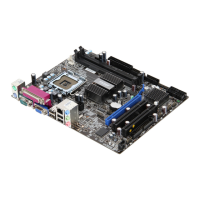
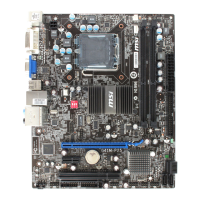
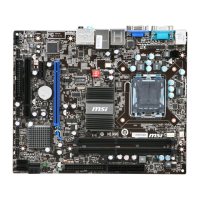
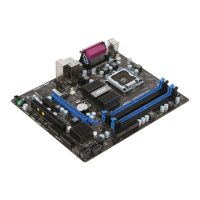

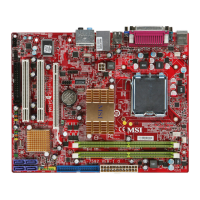
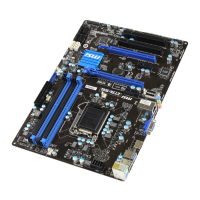




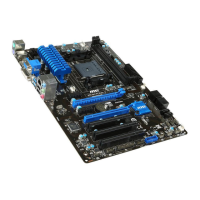
